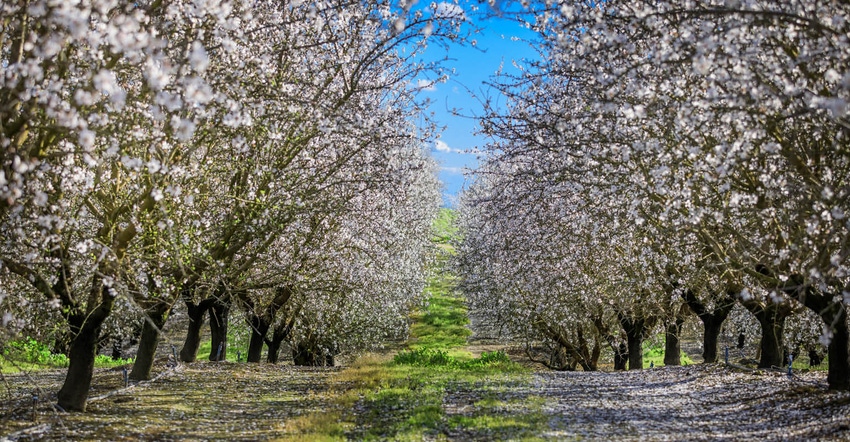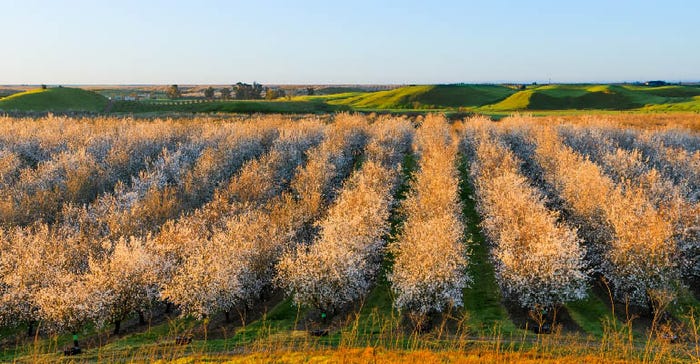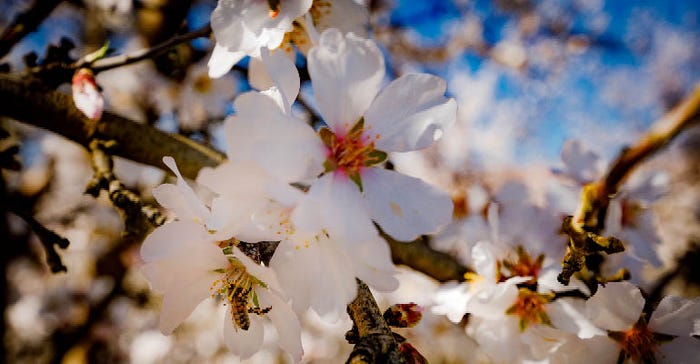November 7, 2017

Sponsored Content
Weather can go from a grower’s best friend to worst enemy in the blink of an eye. This can have a negative impact on a grower’s almond yield if left to its own devices. However, with a well-managed fungicide program, growers can take control back into their hands for disease and resistance prevention.
Full bloom is a common time for many diseases to strike. To control those diseases, Leigh Ann Harrison, Technical Service Representative, BASF U.S. Crop Protection, recommends preventatively applying fungicides on tight spray schedules of 14 to 21 days, especially during adverse weather conditions, as many of these diseases can return quickly or leave a lasting impact on the tree health.
Healthy, disease-free almond trees have more energy to produce almond yield, so growers must be diligent in preventing diseases in their orchards. While there are many diseases out there that growers must keep an eye out for, there are four common diseases that attack during the full bloom season, which growers can prepare for now.

Common Full Bloom Diseases
Jacket Rot
During cool and wet times, jacket rot flourishes. This typically occurs during the latter part of bloom. Extended bloom periods with wet weather are most likely to experience this disease. To identify jacket rot, look for water-soaked brown spots on blossom petals. This infection spreads to flower jackets, causing them to impact developing nuts.
Brown Rot Blossom Blight
This fungus typically attacks when flowers are fully open, which makes rain during bloom a breeding ground for brown rot. Growers can identify this disease when flowers collapse and shoot blight occurs, exuding gum at the base of infected flowers and cankers on blighted twigs. The cankers, caused by the killing of woody tissues of the tree, are the epicenter of brown rot, making it difficult to rid an orchard of the disease following infection.
Common Early Summer Diseases
Rust
In humid environments, rust can be a particularly tough disease. This fungus produces small yellow dots on the upper leaf surface and rusty red pustules on the lower leaf surface. Rust prevention is of the utmost importance as this fungus thrives from one year to the next in infected leaves. Orchards near water sources are particularly susceptible to rust.
Scab
When prolonged wet spring weather occurs, scab can make an untimely appearance. This disease can also be found in orchards that use sprinkler-irrigation systems. Scab is identified by the greasy black spots on leaves, fruit and twigs, and these symptoms typically become apparent in early summer. While it’s not always crop-threatening, scab can cause a tree to become weakened and even lose all of its leaves in a short period of time.

Disease prevention extends tree life and improves fruit quality. Knowing which fungicides to use — and when to use them — is key to preventing full bloom diseases.
“To best prepare for full bloom, growers should decide which fungicide to use at full bloom during the dormant season, and have it ready to apply if full bloom comes early,” recommends Harrison. “Fungicides help growers control what they can and protect against what they cannot.”
Merivon® fungicide applied at full bloom from BASF protects almond blossoms from various disease pressures to increase yield and profitability. This product extends its work by creating reservoirs on leaf surfaces that continually distribute its protective chemistry to provide long-lasting disease protection. The long-lasting disease protection and Plant Health benefits of Merivon fungicide protect and heal, boosting the strength of the tree to create healthier, higher-quality almonds for years to come.
To learn more, visit GrowSmartAlmonds.com or contact your BASF representative.
Always read and follow label directions.
Merivon is a registered trademark of BASF.
About the Author(s)
You May Also Like




